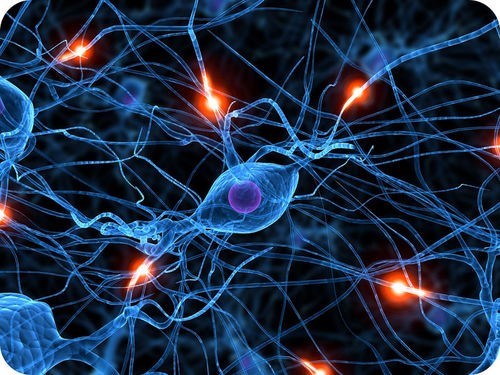- Empty cart.
- Continue Shopping
The Science Behind Nerve Transmission

Nerve transmission is a fascinating and complex process that enables communication between the brain and various parts of the body. This biological marvel allows us to move, feel, think, and even experience emotions.
The Basic Units: Neurons
Neurons, or nerve cells, are the fundamental units of the nervous system. Each neuron consists of three main parts:
- Cell Body: The central part containing the nucleus and other organelles.
- Dendrites: Branch-like structures that receive signals from other neurons.
- Axon: A long, slender projection that transmits signals to other neurons or tissues.
The Electrical Aspect: Action Potentials
Resting Potential
When a neuron is at rest, it maintains a negative electrical charge inside the cell membrane, known as the resting potential. This is achieved through the action of ion pumps that maintain a balance of sodium and potassium ions inside and outside the cell.
Depolarization
When a neuron receives a signal strong enough to trigger an action, the cell membrane undergoes depolarization. Sodium channels open, allowing sodium ions to rush into the cell, making the inside more positive.
Propagation
The depolarization event triggers an action potential, an electrical impulse that travels down the axon. This is an all-or-nothing event; once initiated, it propagates without diminishing in strength.
The Chemical Aspect: Neurotransmitters
Synaptic Cleft
The point where two neurons meet is called a synapse. The axon terminal of one neuron is separated from the dendrite of another by a small gap known as the synaptic cleft.
Neurotransmitter Release
When an action potential reaches the axon terminal, it triggers the release of neurotransmitters, chemical messengers stored in vesicles.
Receptor Binding
The neurotransmitters cross the synaptic cleft and bind to specific receptors on the dendrite of the receiving neuron. This can either excite or inhibit the receiving neuron, depending on the type of neurotransmitter and receptor.
Modulation and Complexity
Inhibitory and Excitatory Signals
A single neuron may receive both inhibitory and excitatory signals. The sum of these signals determines whether the neuron will fire an action potential.
Neuroplasticity
The strength and number of synaptic connections can change over time, a phenomenon known as neuroplasticity. This allows for learning and memory formation.
Conclusion
Nerve transmission is a complex interplay of electrical and chemical events that enable communication within the nervous system. From the initiation of an action potential to the release of neurotransmitters, each step is finely tuned and regulated. Understanding the science behind nerve transmission not only satiates our curiosity but also has practical implications in treating neurological disorders and advancing brain-machine interfaces. So the next time you move a muscle or experience a sensation, remember the intricate science that makes it all possible.








